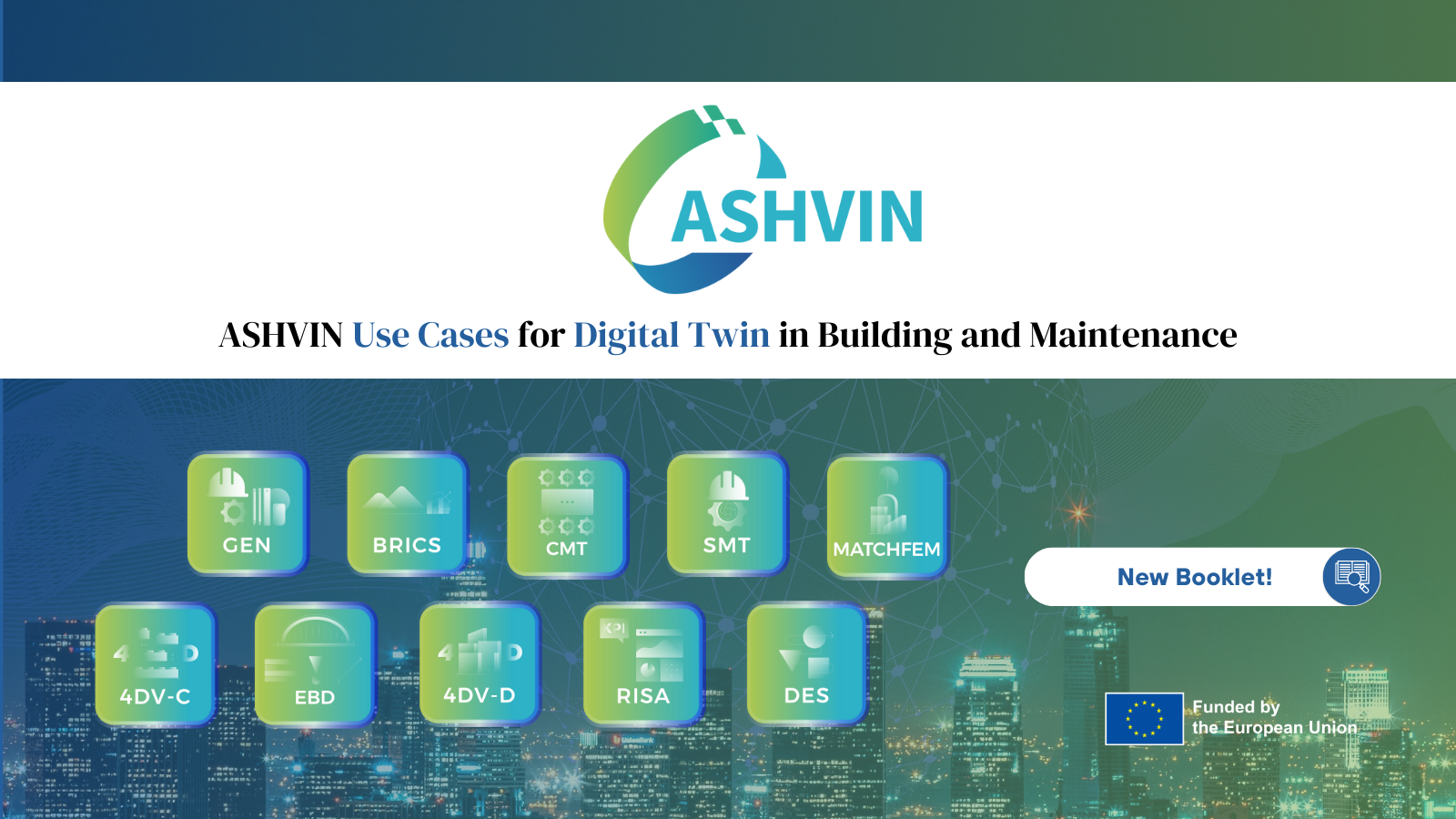Meeting with our Groundbreaking Researchers
The incorporation of Multiphysics in virtual representations through digital twinning enhances the construction industry’s ability to design, construct, and maintain buildings and infrastructure with greater efficiency, sustainability, and resilience. At the forefront of advancements, in the maintenance phase and these virtual representations, we collaborate closely with the Polytechnic University of Catalonia, where PhD Research Student Héctor Posada plays an important role in the ASHVIN research team.
We are pleased to present to you this #4 interview from our series of discussions with the new generation of researchers that participate in the ASHVIN project as a part of their MCs, PhD or Postdoc studies. They will share their research approach in ASHVIN, and plans to continue exploiting this work beyond the project.
Today, we introduce Héctor Posada, a researcher integral to the ASHVIN project since its beginning in October 2020. Driven by a passion for research and a desire to enhance his skills as a Civil Engineer, he pursued a Ph.D. During this period, he reached out to his master’s thesis advisor, Associate Professor Rolando Chacón, to explore potential opportunities. This aligned with the initiation of the ASHVIN project, allowing Héctor to join as a researcher.
For a better understanding, we recommend watching this video. Héctor shares his expertise, setting the stage for further discussions. This is the fourth episode of our enlightening #ResearchStories series#
Hello Héctor, we are very pleased to share this moment with you.
Hello, thanks for having me today.
Could you describe the scope of your research, and how it is related to Digital Building Twins?
As Digital Twins remains at it early stages in the construction industry, my research is focused on developing workflows for the development and implementation of this technology for buildings and infrastructure, with special emphasis in achieving a reliable virtual representation of the multi-physics of an asset, based on performing simulations using data collected on site to support decision-making for construction or maintenance processes.
Which aspects of ASHVIN are relevant to your research ?
One of the advantages of being involved with ASHVIN is having acces to diverse real demosites that serve as a valuable testbed for developing my research. In addition, working with high-quality professionals from different countries of Europe helps to get better results and provides a global perspective to my research topic.
Which challenges have you faced while doing your research?
As Digital Twins involves the implementation of information technologies, it is necessary to code in multiple programming language for software development. Since I’m a Civil Engineer my level of programing was not as good as required, so I had to learn how to code in different programing languages within the thight schedule of the project.
Moreover, keeping a good pace for writing papers and project deliverables represented a great challenge, the inspiration was not present all days.
One last question, the ASHVIN project is ending in March 2024, what will you take with you from the project for the next steps of your research and professional development ?
Having worked with companies and universities from different countries was valuable to increase my professional network, which may results in future collaborations or projects.
Also, during the ASHVIN project I developed along with my UPC team, software and methodologies that could be implement in the industry to support the digitization of the construction sector, which is key to enhance its productivity, as is not as efficient as other industries.
Thanks for your time!
💡 Did you know that behind the scenes in the ASHVIN project, there are over 30 university students, from different degrees, contributing to the project’s research related to the technical development of the digital twin system and to its demonstration in real-life sites. Our academic partners ; Technical University of Berlin (TUB), Erasmus University of Rotterdam (EUR) and Polytechnic University of Catalonia (UPC) oversee their involvement in this project.





